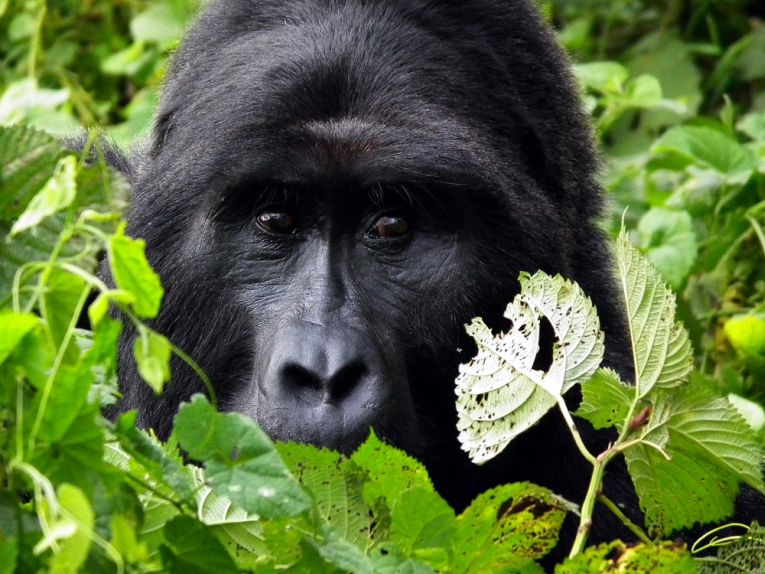After Hutu rebels from Rwanda were responsible for the Bwindi massacre in 1999, tourism and the resultant funding dropped for the mountain gorilla conservationists. They have faced an uphill struggle, but people now travel again to both the Congo and to Bwindi to see the 2 extant populations of one of our rarest primates. That is remarkable, considering they have to travel on foot, given the nature of the forests and terrain. We recently covered the doubtful recovery of the nearby DRC's Virunga forests from oil exploration threats in - Virunga National Park-safe for now.
Gorilla berngei beringei stands out as a close relative that we haven't seen in the wild for a long time! Bravery isn't necessary to visit the 340 great apes of the Bwindi wilderness. Organisation is. Throughout Africa large game now needs military protection, so much so that ranger protection for the tourists seems adequate, at least under Ugandan jurisdiction. The World Heritage Site of Bwindi Impenetrable Forest is at the west end of the East African Rift Valley at 1160 - 2607m.
Bamboo and hardwoods join with thick undergrowth to prevent entry to this "place of darkness." Protection from human ingress has been assured in the past, but encroachment by settlements is always a modern hazard. Fortunately, many of the Ugandans gain appreciably from tourist visits, while the 2nd major population of mountain gorillas live over the DRC border which is just a few km away. The Virunga National Park is 25km away.
With the establishment of Bwindi in 1991, (following a 1932 designation as Crown forest reserves) a remarkable biodiverse region within 3 nations became the major focus of mountain gorilla and forest conservation. With the heritage of Leakey and Fossey, these, "Gorillas in the Mist," have been taken to everybody's hearts. 120 mammal species, 220 butterflies, 27 frogs and 350 birds, chameleons and others also flock together within the trees (163 species), other flowering plants (1000 spp) and ferns (104spp.) Because of the extreme isolation, many of these species are endemics. The fish are hardly studied yet. Colobus monkeys, chimpanzee, elephant, giant forest frogs, hornbills and turacos can be seen near the gorilla groups that are habituated to human "interference," near Nkuringo and Buhoma.
If you want to visit the mountain gorilla, the difficult trip over poor roads begins with application for a permit. This control ensures the precious animals aren't over-visited, or exposed to any human infections. The Ugandan Wildlife authority gains great revenue from the operation, so you could be lucky to avoid the rainy season, avoid car-sickness and get a comfortable lodge or tent. You will be dissuading locals from using the species for bushmeat or frightening them away to use the forest land. The visit will be brief, uncomfortable and quite costly, but some have paid a higher price.
The main point can be made by The Gorilla Organisation on their website, which criticises the 20% "commission" for local communities as too low. Foreign visitors could also be joined by more local enthusiasts, at a lower price, and profits need to be exclusively for owners of local facilities. Sustainable conservation is still a dream here.










